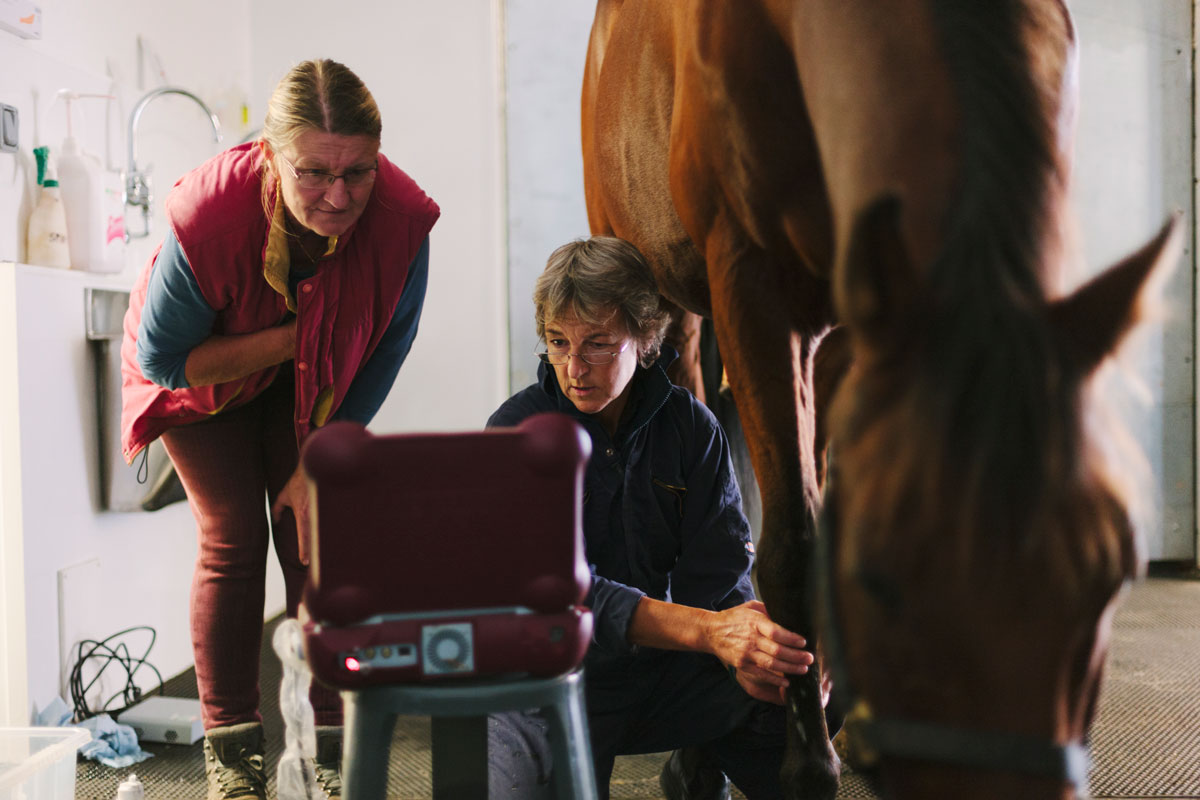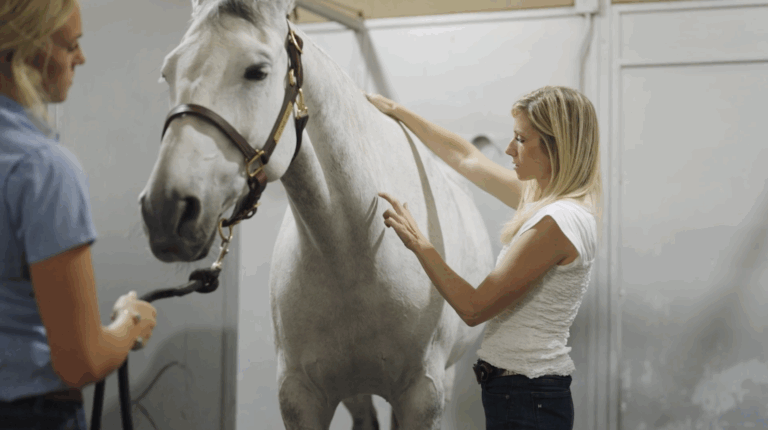
Drs. Sarah Gold, Melissa King and Stacey Oke joined together to present on the topic “Horse is Still Lame Despite Intense Therapy: How to Manage the Client.” King, DVM, PhD, DACVSMR, focuses on the study and application of equine rehabilitation at CSU. Gold, DVM, DACVSMR, practices at B.W. Furlong and Associates in New Jersey. Oke, MSc, DVM (the author of this article), is a private-practice veterinarian.
Huh, Who’d Have Thunk?
Part Four: Fail. Try again. Fail better.

How exactly does one celebrate equine practice in the face of an angry client or, better yet, an angry client who’s in your face? That was this afternoon’s topic of discussion in the session led by Sarah Gold and Melissa King. Or specifically, how do you manage the client when their horse is still lame despite intense therapy?
In a room predominantly packed with young practitioners, this was obviously a pertinent question and one that plagues the masses. Gold and King painted a picture of an owner upset because their lame horse, on whom they have spent a fortune, has not yet shown any improvement.
Them: It’s been a month and he looks exactly the same!
You: Yes, I told you it was going to take six months.
Them: But I’ve spent all this money and you’ve done nothing.
How do you address this owner’s concern/accusation?
Many ideas were thrown about, with one of the more focused conversations touching on adopting a form of “concierge medicine.” This involves having the owner play an active role in devising the treatment plan and formally agreeing to that plan. This approach, attendees felt, would force the owner to have some degree of accountability if the case’s outcome is not as successful as the owner had hoped. This approach could be particularly useful if the owner is refusing referral or if you just have that gut feeling that the case isn’t going to end well.
For example, if an owner is insisting on a surgical procedure that you feel won’t work, have the owner choose where they would like to go. Then, if the surgeon deems the horse a poor surgical candidate or if the procedure does not have the desired outcome, the owner cannot blame you. They have the right to be upset about the situation, but not with how you managed the case.
Sometimes, owners aren’t necessarily angry, just emotional and frustrated. They often just need someone to listen to them. Again, concierge medicine.
But we are busy practitioners and, according to a quick survey, we aren’t charging for concierge medicine. The time-consuming nature of having these in-depth conversations—often more than once—was brought up several times during the session. Paying for care based on level of intensity (1, 2, 3, etc.) or time of the exam (brief, regular, extended) was one solution, but again, not used by very many practitioners.
When having a conversation in which the owner participates in creating their own treatment plan, be sure to also set clear expectations. This will, according to the more seasoned attendees, allow you to set the same expectations for yourself so you don’t jump on the blame bandwagon and kick yourself for the case not ending well.
In addition to cases simply not working out, the group finally acknowledged the elephant in the room and appreciated that sometimes medical errors contribute to poor outcomes. One seasoned veterinarian addressed this fact and reminded the mostly-Millennial room that mistakes are inevitable.
“When you’re young, the only way you learn is by mistakes … mistakes both great and minor.”
Many of us took a minute to mull over this powerful statement. It reminded me of the expression “Fail. Try again. Fail better.”
But then I shook my head and thought “What about when you’re old? Old like me? Am I not supposed to make mistakes anymore?”
And in what can only be described as a high-speed movie sequence, a parade of on-the-job errors I have made recently projected from my amygdala. In the spirit of helping my colleagues fail better by learning from others’ mistakes, here are a few pointers:
· When popping back to your truck and you’re in a rush, don’t try to meld “see you in a few” and “see you in a couple” or you may just be seeing them in a fu*kle.
· Pick the correct line on your hospital’s phone and confirm with whom you are speaking before saying “Hey, baby girl!”, thinking it’s one of your technicians calling from the field. You never know when a client might be calling to book a euthanasia (note: this was not a creepy “Hey, baby girl”).
· When owners ask about alternate treatment options, particularly those used in human medicine, tread cautiously. A client asked about prescribing metformin for their diabetic dog. I let her know that we don’t use metformin in diabetic dogs and that I had just learned from a highly reliable source (Facebook) that metformin causes cancer. Guess who takes metformin….
Who’d have thunk that failing so much would finally be perceived as a good thing? Not me; yet I am so very, very relieved! Follow me tomorrow to learn about more things you didn’t know you didn’t know.
About ADM Animal Nutrition and Cellarator Advantage
Demands of exercise are a stressor for the performance horse. Heavy work can overwhelm the body’s natural ability to deal with oxidative stress, which can damage muscle proteins, lipids and DNA, release pro-inflammatory cytokines leading to muscle pain, and damage the mitochondrial membrane decreasing energy production. Cellarator Advantage RECOVERY+ by ADM Animal Nutrition™ was designed to help the performance horse combat the stress of exercise. To learn more, watch this video and come visit with the ADM experts at AAEP, booth #601/700.







